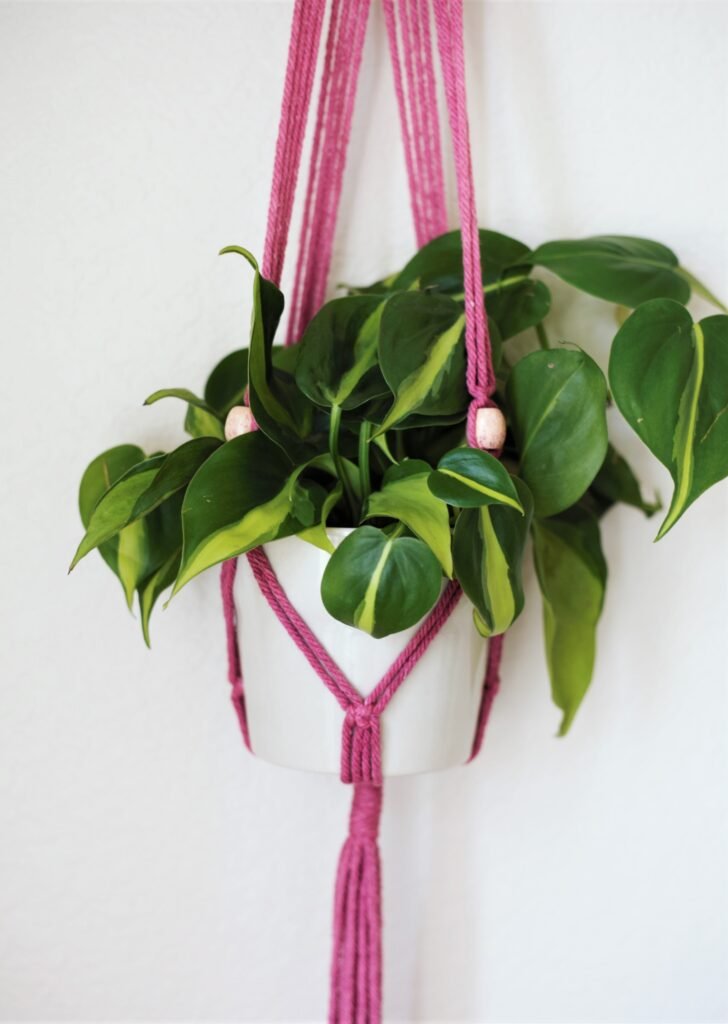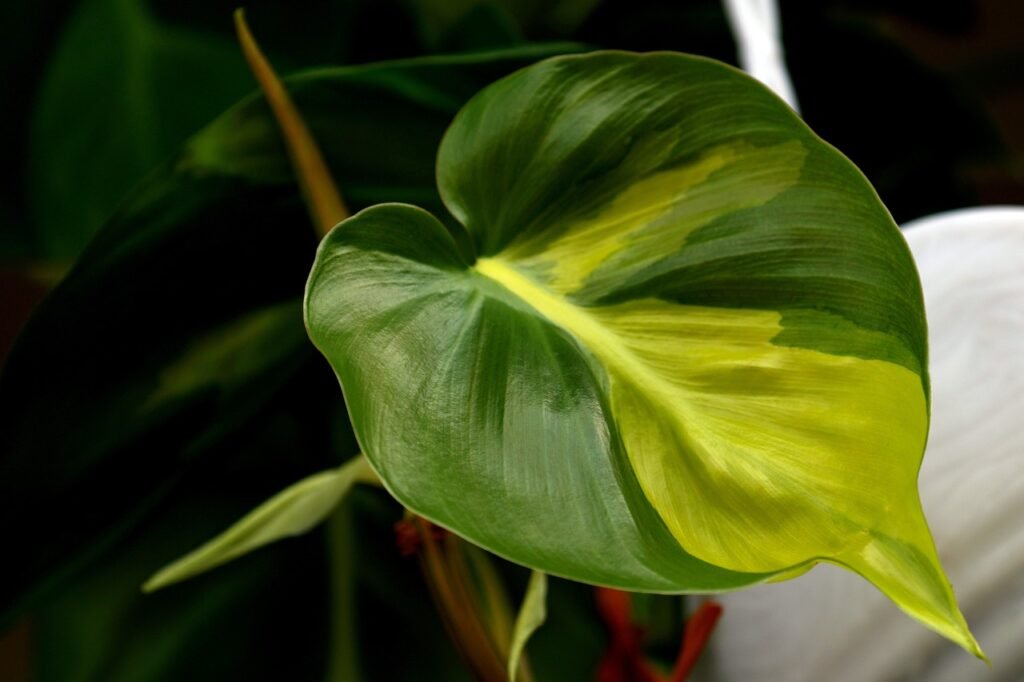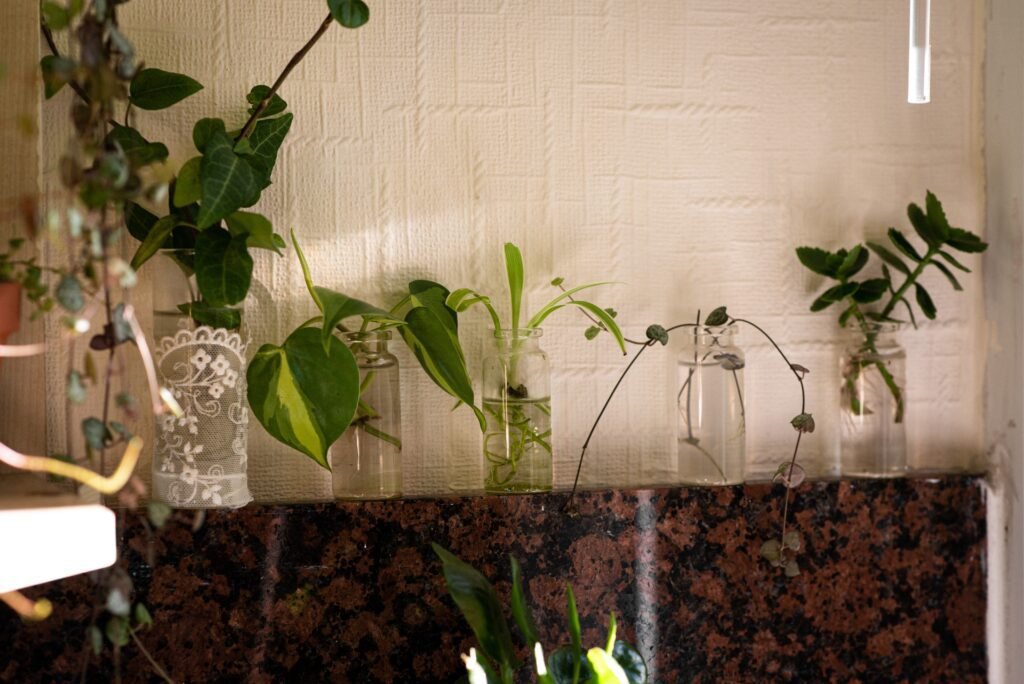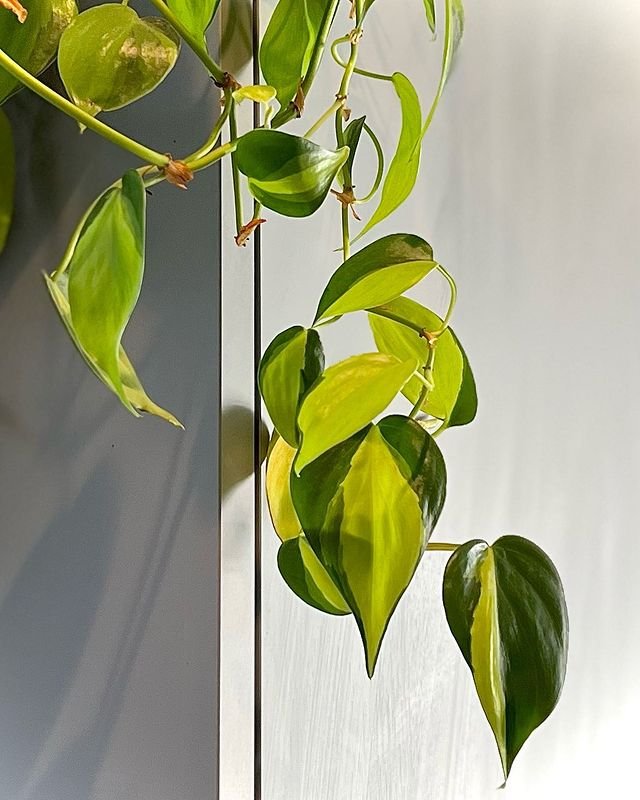Table of Contents
Ultimate Philodendron Brasil Care Guide: Houseplant Propagation Tips and Tricks
An Introduction to Philodendron Brasil Care
Philodendron brasil is one of the most popular and easy to care for houseplants. It is a fast-growing plant that can add a touch of tropical flair to any indoor space. Philodendron brasil has beautiful variegated leaves that are green with yellow stripes, giving it a striking appearance. The plant is also very adaptable and can tolerate a range of light and moisture conditions.
However, even though philodendron brasil is an easy-care plant, it still needs some basic care and maintenance to thrive. In this article, we will provide you with a complete guide to philodendron brasil care and propagation, covering everything from the optimal light conditions, water needs, soil type, temperature and humidity preferences, fertilizing tips, pruning and repotting methods, and common problems and solutions. We will also show you how to propagate your philodendron brasil and grow more plants from cuttings.
By following this guide, you will be able to keep your philodendron brasil healthy and happy, and enjoy its beauty for years to come.
The Brasil Plant: An Overview
Philodendron brasil is a cultivar of philodendron hederaceum, which is also known as heartleaf philodendron. Philodendron hederaceum is native to Central and South America, where it grows as a vine in the tropical rainforests. It belongs to the Araceae family, which includes other popular houseplants such as pothos, monstera, and peace lily.
Philodendron brasil is a trailing or climbing plant that can grow up to 10 feet long in its natural habitat. However, as a houseplant, it usually stays much smaller and can be easily trained to grow on a trellis, moss pole, or hanging basket. The plant has glossy, heart-shaped leaves that are about 2 to 4 inches long. The leaves have a distinctive variegation pattern that consists of green with yellow or cream-colored stripes along the midrib and the edges.
The variegation of philodendron brasil is caused by a mutation that affects the chlorophyll production in the plant cells. Chlorophyll is the pigment that gives plants their green color and helps them perform photosynthesis. When some cells lack chlorophyll, they appear yellow or white instead of green. This creates a contrast between the green and yellow parts of the leaves.
The variegation of philodendron brasil can vary depending on the light conditions, the age of the plant, and the genetics of the individual plant. Some plants may have more or less yellow than others, or may have different shades of green and yellow. The variegation can also change over time, as new leaves emerge or old leaves fade.
Philodendron brasil does not produce flowers indoors, but it can occasionally produce small, greenish-white spathes that are hidden among the leaves. These spathes are not very showy and are often overlooked by growers. The plant does not produce seeds either, but it can be easily propagated by stem cuttings.

How to Effectively Grow a Philodendron Brasil
Optimal Light Conditions for a Philodendron Brasil
Philodendron brasil prefers bright indirect light, but it can also tolerate low light conditions. However, too much direct sunlight can scorch the leaves and cause them to lose their variegation. Too little light can also affect the variegation and make the plant look dull and leggy.
Therefore, it is best to place your philodendron brasil near a window that receives filtered or diffused light, or in a spot that gets some morning or evening sun.
Water needs for Philodendron Brasil Care
Philodendron brasil likes to be watered regularly, but not too frequently or too much. The plant likes its soil to be moist but not soggy or waterlogged. Overwatering can cause root rot and other fungal diseases that can kill your plant. Underwatering can cause the leaves to wilt and droop.
Therefore, it is important to check the soil moisture before watering your philodendron brasil. You can use your finger to feel the top 1 or 2 inches of soil. If it feels dry, then it is time to water your plant. If it feels moist or wet, then wait until it dries out a bit more before watering again.
Importance of Soil for Philodendron Brasil Care
Philodendron brasil is not very picky about the soil type, but it does prefer a well-draining and aerated potting mix that can retain some moisture but also allow excess water to drain out. You can use a general-purpose potting soil or a peat-based mix that is suitable for tropical plants.
You can also add some perlite, vermiculite, or orchid bark to improve the drainage and aeration of the soil. Avoid using soil that is too heavy, compacted, or clayey, as this can suffocate the roots and prevent water from draining properly.
Understanding Temperature and Humidity needs for Philodendron Brasil
Philodendron brasil is a tropical plant that likes warm and consistent temperatures. The ideal temperature range for this plant is between 65°F and 85°F (18°C and 29°C). The plant can tolerate some temperature fluctuations, but it does not like extreme cold or heat. Exposure to temperatures below 50°F (10°C) or above 95°F (35°C) can damage the plant and cause leaf drop, wilting, or browning.
Therefore, it is best to keep your philodendron brasil away from drafts, air conditioners, heaters, or radiators that can create sudden temperature changes.
Philodendron brasil is a humidity-loving plant that thrives in high humidity levels. The ideal humidity range for this plant is between 60% and 80%. However, the plant can also adapt to lower humidity levels, as long as it is not too dry. Low humidity can cause the leaves to curl, brown, or crisp at the edges.
Therefore, it is advisable to increase the humidity around your philodendron brasil by using a humidifier, a pebble tray, a misting bottle, or grouping it with other humid-loving plants.
Effective Philodendron Brasil Maintenance Tips
Philodendron brasil is an easy-to-grow plant that does not require much effort or expertise to grow. However, there are some tips and tricks that can help you grow your philodendron brasil more effectively and efficiently. Here are some of the best practices for growing a philodendron brasil:

- Choose the right pot: Philodendron brasil does not need a large or deep pot, as it has a shallow and compact root system. However, it does need a pot that has good drainage holes at the bottom, as this will prevent waterlogging and root rot. You can use any material for your pot, such as plastic, ceramic, terracotta, or metal, but make sure it is sturdy and stable enough to support the weight of your plant. You can also use a hanging basket or a planter with a trellis or a pole to allow your philodendron brasil to climb or trail.
- Repot when necessary: Philodendron brasil is not a fast-growing plant, but it can still outgrow its pot over time. Therefore, it is recommended to repot your philodendron brasil every 2 or 3 years, or when you notice that the roots are coming out of the drainage holes or circling around the pot. When repotting your philodendron brasil, choose a pot that is one size larger than the previous one, and use fresh potting soil that is well-draining and aerated. Gently remove the plant from its old pot and shake off any excess soil from the roots. Trim any damaged or rotten roots with a clean and sharp pair of scissors. Place the plant in the new pot and fill it with soil until the roots are covered. Water your plant thoroughly and place it in its usual spot.
- Fertilize moderately: Philodendron brasil is not a heavy feeder, but it can benefit from some fertilization during its active growing season. You can use a balanced liquid fertilizer that is diluted to half-strength and apply it once every month from spring to summer. Alternatively, you can use a slow-release granular fertilizer that is sprinkled on the soil surface once every 3 months during the same period. Avoid over-fertilizing your philodendron brasil, as this can cause salt buildup in the soil and burn the roots and leaves of your plant. Also, do not fertilize your philodendron brasil during winter, as this is its dormant period and it does not need extra nutrients.
- Prune regularly: Philodendron brasil is a low-maintenance plant that does not need much pruning. However, you may want to prune your philodendron brasil occasionally to remove any dead, damaged, diseased, or yellowing leaves that may affect its appearance and health. You may also want to prune your philodendron brasil to control its size and shape, especially if it becomes too long or leggy. To prune your philodendron brasil, use a clean and sharp pair of scissors or pruning shears and cut off any unwanted stems or leaves at the node where the leaf meets the stem. Make sure to leave at least one or two leaves on each stem to allow the plant to grow back. You can also use the pruned stems or leaves to propagate new plants, as we will explain later.
How and When to Prune Philodendron Brasil
Growing More Philodendrons: Propagating Philodendron Brasil
Basic Methods for Propagating Philodendron Brasil
One of the best things about philodendron brasil is that it is very easy to propagate and grow more plants from cuttings. Propagating your philodendron brasil is a fun and rewarding way to expand your plant collection, share your plants with friends and family, or create new arrangements and displays. There are two basic methods for propagating philodendron brasil: water propagation and soil propagation. Here is how to do each method:
Water propagation:
This is the simplest and most common method for propagating philodendron brasil. All you need is a glass jar or vase, some water, and some scissors. To do this method, follow these steps:

- Cut off a stem or a leaf from your philodendron brasil, making sure it has at least one node (the bump where the leaf attaches to the stem) and some aerial roots (the thin roots that grow along the stem).
- Remove any lower leaves from the cutting, leaving only one or two leaves at the top.
- Fill a glass jar or vase with water and place the cutting in it, making sure the node and the roots are submerged in water.
- Place the jar or vase in a bright spot, but away from direct sunlight.
- Change the water every few days to keep it fresh and prevent algae growth.
- Wait for the roots to grow longer and thicker, which may take a few weeks to a few months depending on the conditions.
- Once the roots are about 2 to 4 inches long, you can transplant the cutting into soil or keep it in water indefinitely.
Soil propagation:
This is another easy method for propagating philodendron brasil, but it requires some more materials and care. You will need a pot, some potting soil, some rooting hormone (optional), and some plastic wrap or a plastic bag. To do this method, follow these steps:
- Cut off a stem or a leaf from your philodendron brasil, making sure it has at least one node and some aerial roots.
- Remove any lower leaves from the cutting, leaving only one or two leaves at the top.
- Dip the cut end of the stem or leaf in some rooting hormone (optional), which can help speed up the rooting process and prevent infections.
- Fill a pot with moist potting soil and make a hole in it with your finger or a pencil.
- Insert the cutting into the hole and gently press the soil around it to secure it in place.
- Cover the pot with some plastic wrap or a plastic bag, leaving some holes for air circulation.
- Place the pot in a warm and bright spot, but away from direct sunlight.
- Water the soil lightly whenever it feels dry to the touch, but avoid overwatering or soggy soil.
- Wait for the cutting to root and sprout new leaves, which may take a few weeks to a few months depending on the conditions.
- Once the cutting has established itself, you can remove the plastic cover and treat it as a normal plant.
Key Challenges in Philodendron Brasil Care
Philodendron brasil is a relatively easy-care plant that does not face many challenges or issues. However, there are some common problems that may occur with this plant and affect its health and appearance.

Common Problems with Philodendron Brasils and their Solutions
Loss of variegation:
One of the main attractions of philodendron brasil is its beautiful variegated leaves that are green with yellow stripes. However, sometimes these stripes may fade or disappear completely, leaving only green leaves. This can happen due to several reasons, such as:
- Too much direct sunlight: Exposure to too much direct sunlight can bleach out the yellow parts of the leaves and make them turn green. To prevent this, move your philodendron brasil to a spot that receives bright indirect light or filtered light only.
- Too little light: Lack of sufficient light can also affect the variegation of your philodendron brasil and make it lose its color contrast. To prevent this, move your philodendron brasil to a spot that receives more natural light, but avoid direct sun.
- Genetic variation: Some plants may have more or less variegation than others due to their genetic makeup. This is not something you can control or change, but you can choose plants that have more variegation when buying or propagating them.
- Reversion: Sometimes, a variegated plant may revert back to its original green form due to a mutation or a stress factor. This can happen randomly or gradually over time. To prevent this, you can prune off any stems or leaves that show signs of reversion and propagate new plants from the variegated parts.
Yellow leaves:
Another common problem with philodendron brasil is yellowing of the leaves, which can indicate several issues, such as:
- Overwatering: Watering your philodendron brasil too much or too often can cause the roots to rot and the leaves to turn yellow and fall off. To prevent this, water your plant only when the top 1 or 2 inches of soil feel dry, and make sure the pot has good drainage holes.
- Underwatering: Watering your philodendron brasil too little or too infrequently can also cause the leaves to turn yellow and droop. To prevent this, water your plant regularly and thoroughly, and check the soil moisture before watering.
- Nutrient deficiency: Lack of adequate nutrients can also cause the leaves of your philodendron brasil to turn yellow, especially if the soil is old or depleted. To prevent this, fertilize your plant with a balanced liquid fertilizer once a month during spring and summer, and replace the soil every 2 or 3 years.
- Pests or diseases: Some pests or diseases can also cause the leaves of your philodendron brasil to turn yellow, such as spider mites, mealybugs, aphids, scale insects, fungal infections, or bacterial infections. To prevent this, inspect your plant regularly for any signs of infestation or infection, and treat them accordingly with insecticidal soap, neem oil, or fungicide.
Brown or black spots:
Another common problem with philodendron brasil is brown or black spots on the leaves, which can indicate several issues, such as:
- Sunburn: Exposure to too much direct sunlight can scorch the leaves of your philodendron brasil and cause them to develop brown or black spots. To prevent this, move your plant to a spot that receives bright indirect light or filtered light only.
- Cold damage: Exposure to cold temperatures or drafts can also damage the leaves of your philodendron brasil and cause them to develop brown or black spots. To prevent this, keep your plant away from windows, doors, air conditioners, heaters, or radiators that can create sudden temperature changes.
- Over-fertilizing: Applying too much fertilizer to your philodendron brasil can also burn the roots and leaves of your plant and cause them to develop brown or black spots. To prevent this, fertilize your plant with a diluted liquid fertilizer once a month during spring and summer only, and flush the soil with water occasionally to remove any salt buildup.
- Pests or diseases: Some pests or diseases can also cause the leaves of your philodendron brasil to develop brown or black spots, such as spider mites, mealybugs, aphids, scale insects, fungal infections, or bacterial infections. To prevent this, inspect your plant regularly for any signs of infestation or infection, and treat them accordingly with insecticidal soap, neem oil, or fungicide.
Refining Philodendron Brasil Care Practice
Philodendron brasil is a forgiving and adaptable plant that can tolerate some mistakes and neglect. However, if you want to refine your philodendron brasil care practice and make your plant thrive even more, you can follow some pro tips that can help you achieve better results. Here are some of the pro tips for a thriving philodendron brasil:
- Provide some support: Philodendron brasil is a trailing or climbing plant that can grow long and leggy over time. If you want to keep your plant more compact and bushy, you can provide some support for it to climb on. You can use a trellis, a moss pole, a stake, or a hoop to give your plant something to cling on. You can also use some clips or ties to secure the stems to the support. This will help your plant grow more upright and fuller.
- Rotate your plant: Philodendron brasil is a light-loving plant that will grow towards the light source. If you keep your plant in one spot for too long, it may become lopsided or uneven. To prevent this, you can rotate your plant every few weeks to ensure even growth and distribution of light. This will help your plant maintain its shape and balance.
- Clean your plant: Philodendron brasil has glossy leaves that can accumulate dust and dirt over time. This can affect the appearance and health of your plant by blocking the light and reducing the photosynthesis process. To prevent this, you can clean your plant regularly by wiping the leaves with a damp cloth or a soft brush. You can also use some mild soap or plant cleaner to remove any stubborn stains or residues. This will help your plant look shiny and healthy.
- Mist your plant: Philodendron brasil is a humidity-loving plant that enjoys some extra moisture in the air. If you live in a dry or arid climate, you can mist your plant occasionally with a spray bottle of water. This will help your plant stay hydrated and prevent the leaves from curling or browning. However, avoid misting your plant too much or too often, as this can cause fungal or bacterial problems. Also, avoid misting your plant during the night or when the sun is too strong, as this can cause the leaves to burn.
- Trim your plant: Philodendron brasil is a fast-growing plant that can become too long or leggy over time. If you want to keep your plant more manageable and tidy, you can trim your plant regularly by cutting off any unwanted stems or leaves at the node where they meet the main stem. This will help your plant grow more compact and bushy. You can also use the trimmed stems or leaves to propagate new plants, as we explained earlier.
FAQs
How much sun does Philodendron Brasil need?
Philodendron Brasil is an easy-to-grow indoor plant that thrives in bright, indirect light. It can tolerate some dappled sunlight but avoid exposing it to harsh, direct sun to prevent leaf scorch. Place it near a window with a sheer curtain or on a table a few feet away from a sunny window to ensure it receives the right amount of light.
Do Philodendron Brasil climb or hang?
Philodendron Brasil can be grown as either a climbing or hanging plant, depending on your preference and the support structure you provide. To encourage climbing, use a moss pole or trellis, and the plant will naturally start to climb. If you prefer it to hang, allow its vines to drape over the edges of the pot. Regularly pruning the plant back can encourage bushier growth, making it an attractive hanging plant.
How do you care for a Philodendron Brasil?
Caring for Philodendron Brasil is straightforward. Keep the soil consistently moist but not waterlogged. Water about once a week during the growing season (spring and summer months) and reduce the frequency in the dormant season (fall and winter). Ensure the pot has drainage holes to prevent overwatering. Fertilize with a balanced, water-soluble fertilizer every 4-6 weeks during the growing season. Regularly inspect for any signs of pests or diseases and prune as needed. This plant benefits from occasional repotting to refresh the soil and provide more room for growth.
Does Philodendron Brasil like to be root bound?
Philodendron Brasil doesn’t necessarily prefer to be root bound. While it’s okay for the plant to become slightly root bound as it matures, it’s a good practice to repot it every 2-3 years or when you notice it’s outgrowing its pot. Repotting allows you to refresh the soil, inspect the roots for health, and provide the plant with more space for growth. Use a pot that is one size larger than the current one and ensure it has drainage holes.
Does Philodendron Brasil like to be misted?
Philodendron Brasil doesn’t require misting as a strict necessity. While it can tolerate normal indoor humidity, misting can be beneficial during dry conditions, especially in the winter when indoor air tends to be dry. Lightly misting the leaves can create a more humid microenvironment around the plant, but it’s not a critical part of its care routine.
Why are the leaves on my Philodendron Brasil turning yellow and falling off?
Yellowing leaves on a Philodendron Brasil can result from various factors. Overwatering, underwatering, or poor drainage can lead to root issues, affecting leaf health. Ensure you’re watering appropriately, allowing the soil to dry slightly between waterings. Also, consider the humidity; this plant prefers moderate humidity levels, and yellowing leaves might indicate that your plant isn’t getting enough humidity. Finally, check for any signs of pests or disease, as these can also cause leaf discoloration. Regularly inspect your plant for issues and adjust care accordingly.



